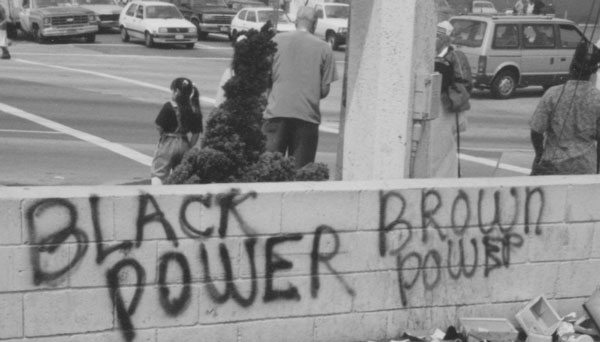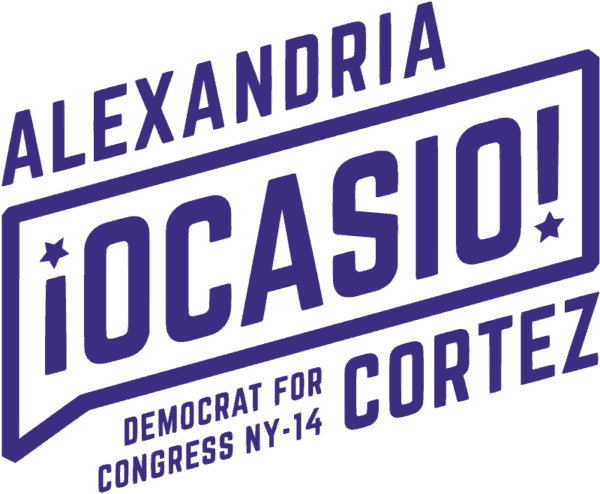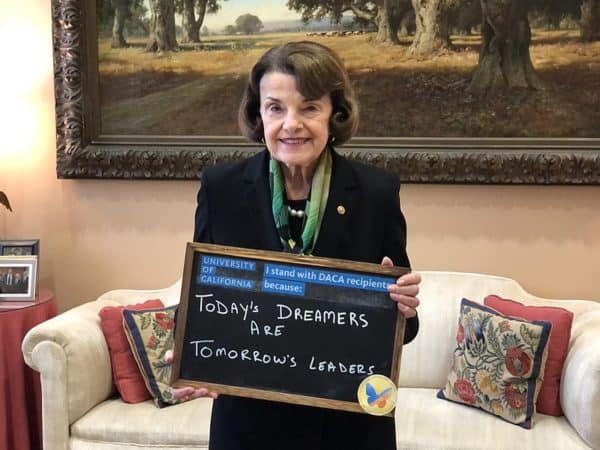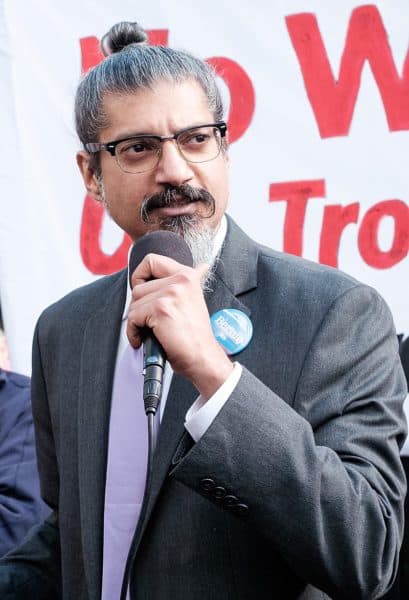Can Hispanics, Asians, and White Progressives Launch a Socialist Insurgency in the Western United States?
- Post AuthorBy Chris Roberts
- Post DateWed Apr 01 2020
Credit Image: ColumbianSFR via DeviantArt
The fight for the Democrat presidential nomination is all but over. Joe Biden’s coalition of blacks, white suburbanites, and old people gave him one crushing victory after another, and — barring an act of God — he will face President Donald Trump in the general election. Senator Bernie Sanders failed to mount much resistance to Mr.. Biden nationally, but the democratic socialist’s successes in the West mean trouble for that region’s centrist Democrats. Mr. Sanders won the California primary and the Nevada caucus because of strong support from Hispanics and Asians in both states, neither of which had enough white moderates or blacks to stop him.
Here are the Nevada results:
| Candidate | White | Black | Hispanic | Other | Total Non-White |
|---|---|---|---|---|---|
| Joe Biden | 15% | 38% | 17% | 12% | 23% |
| Bernie Sanders | 29% | 28% | 50% | 44% | 42% |
| Pete Buttigieg | 19% | 2% | 11% | 11% | 8% |
| Elizabeth Warren | 15% | 11% | 7% | 9% | 9% |
| Amy Klobuchar | 13% | 2% | 4% | 9% | 4% |
| Tom Steyer | 8% | 17% | 9% | 13% | 12% |
Here is California:
| Candidate | White | Black | Hispanic | Asian | Other | Total Non-White |
|---|---|---|---|---|---|---|
| Joe Biden | 28% | 42% | 25% | 20% | N/A | 27% |
| Bernie Sanders | 30% | 15% | 50% | 31% | N/A | 40% |
| Pete Buttigieg | 5% | 4% | 4% | 8% | N/A | 5% |
| Elizabeth Warren | 16% | 10% | 6% | 10% | N/A | 8% |
| Michael Bloomberg | 12% | 20% | 10% | 20% | N/A | 14% |
| Amy Klobuchar | 4% | 3% | 1% | 0% | N/A | 1% |
| Tom Steyer | 2% | 3% | 3% | 4% | N/A | 3% |
In both states, whites voted for Mr. Sanders, blacks for Mr. Biden by a large margin, and all other non-white groups went for Mr. Sanders by about equally large margins. Vermont’s maverick senator won 50 percent of the Hispanic vote, with no other candidate coming close; in Nevada, Mr. Biden came in second with 17 percent, and in California with 25 percent. For Asians and “others,” no candidate came within ten points of Mr. Sanders’ leads. This bodes well for any future candidates like Mr. Sanders. Look at the racial mix:
| State | White | Black | Hispanic | Asian | Other | Total Non-White |
|---|---|---|---|---|---|---|
| California | 36.8% | 6.5% | 39.3% | 15.3% | 6% | 63.2% |
| Nevada | 48.7% | 10.1% | 29.0% | 8.7% | 7% | 51.3% |
This is fertile ground for any candidate who can put together a coalition of non-black minorities and left-wing whites, even at the cost of losing many whites and a majority of blacks. This is especially true because Hispanics and Asians are the fastest growing groups in the country, while whites are in decline and blacks are just holding steady. New Mexico is also vulnerable to such a coalition, because Hispanics outnumber whites, and blacks are just 2.6 percent of the population. In Arizona, whites still outnumber Hispanics 11 to 6, and blacks outnumber Asians 4 to 3 — but that could change in a generation. Other places where the kind of coalition we saw win in Nevada and California may soon become possible are the historically majority-white Western states, such as Montana, Idaho, and Colorado. In the coming decades, they will become less white as Hispanics come in from the Southwest and Asians from the Pacific Coast; black populations are unlikely to grow. Mr. Sanders either won or nearly won all states of this kind.
Pick one.
No other part of America has this racial composition. East of the Rocky Mountains, wherever there are lots of Hispanics, there are roughly equal numbers of blacks (e.g. New York and Illinois) except for Florida, whose uniquely Cuban/Caribbean Hispanics are not likely to support a remotely socialist politician. Even Texas, which many consider demographically similar to California, is sufficiently different to have kept Mr. Sanders from winning there, despite narrowly winning the white vote and dominating the Hispanic and Asian votes as he did in California.
| White | Black | Hispanic | Asian | Others | Total Non-White | |
|---|---|---|---|---|---|---|
| Texas | 41.5% | 12.8% | 39.6% | 5.2% | 3.1% | 58.5% |
| Compared to CA | +4.7% | +6.3% | +0.3% | -10.1% | -2.9% | -4.7% |
White advocates have long warned that America’s forthcoming non-white majority will end conservatism and destroy the Republican Party, but what is happening is more complex. Within the Democrat Party, a divide is forming along racial lines. There is a moderate wing backed by blacks and certain whites, particularly old people and suburbanites. Then there is a more leftist, or even socialist wing of younger and urban whites and non-black minorities. Mr. Sanders has twice demonstrated that the socialist wing can’t win at the national level — but it can win locally.
Congresswoman Alexandria Ocasio-Cortez is a good example. In 2018, with the backing of the Democratic Socialists of America, she launched a primary challenge against Joseph Crowley, a moderate white Democrat, in New York’s 14th Congressional district. Its racial makeup is 11 percent black, 16 percent Asian, 18 percent white, and 50 percent Hispanic. That makes it solidly blue (Hillary Clinton won it in 2016 with 76 percent of the vote), but it also means no black/white alliance backing a moderate can stop a progressive who attracts Hispanics and Asians. Two years ago, Mr. Crowley complained, “I couldn’t help being born white” and lost to Alexandria Ocasio-Cortez by 15 points.
California Senator Dianne Feinstein
A similar election took place in California. Due to the Republican Party’s weakness and the state’s unusual election laws, in 2018, Senator Dianne Feinstein faced only one opponent in her bid for reelection: fellow Democrat Kevin de León, a progressive Hispanic. Though very few Americans would consider Mrs. Feinstein a “moderate,” her challenger ran to her left, claiming she didn’t oppose President Trump vigorously enough. He lost to her by less than ten points — 54.2 percent to 45.8 percent — and exit polls show that this race was similar to California’s primary:
| Candidate | White | Black | Hispanic | Asian | Other | Total Non-White |
|---|---|---|---|---|---|---|
| Dianne Feinstein | 55% | 55% | 43% | N/A | N/A | 50% |
| Kevin de León. | 43% | 36% | 50% | N/A | N/A | 44% |
Incumbents are very hard to beat; they win reelection at least 80 percent of the time. Mr. de León was running against a widely known figure who first won her Senate seat in 1992. You need a lot of money and staff to run against such an entrenched candidate, especially in a state of nearly 40 million people. Furthermore, as the more centrist of the two, Mrs. Feinstein presumably had the support of Republican voters in the general election. Even against all those obstacles, Mr. de León won with Hispanics — his own people and the state’s largest racial group — and lost most dramatically with blacks, the state’s smallest group. He also did better than Mrs. Feinstein’s last three Republican challengers, who won 37.5 percent of the vote in 2012, 35.0 percent in 2006, and 36.6 percent in 2000.
Kevin de León
This November, another very prominent “moderate” white California incumbent will be tested against a younger, left-wing, non-white challenger. Nancy Pelosi is defending her seat against Shahid Buttar, a Pakistani democratic socialist. Her district covers most of San Francisco: 6 percent black, 15 percent Hispanic, 33 percent Asian, and 44 percent white. In other words, she has a good chance, but she’ll have to fight to win.
Shahid Buttar (Credit Image: Derrick Liu via Wikimedia)
America’s Southwest will see more candidates like Mr. Buttar. Our nation’s rising tide of color is not uniform, and has plenty of internal divisions. That blacks are ending up in political coalitions at odds with Asians and Hispanics is an interesting development. But more important, far-left non-whites are increasingly challenging liberal whites. This should be a warning to those whites that this country is changing, and that no matter how enlightened they think they are, they’ll still be on the losing side in a non-white America.





